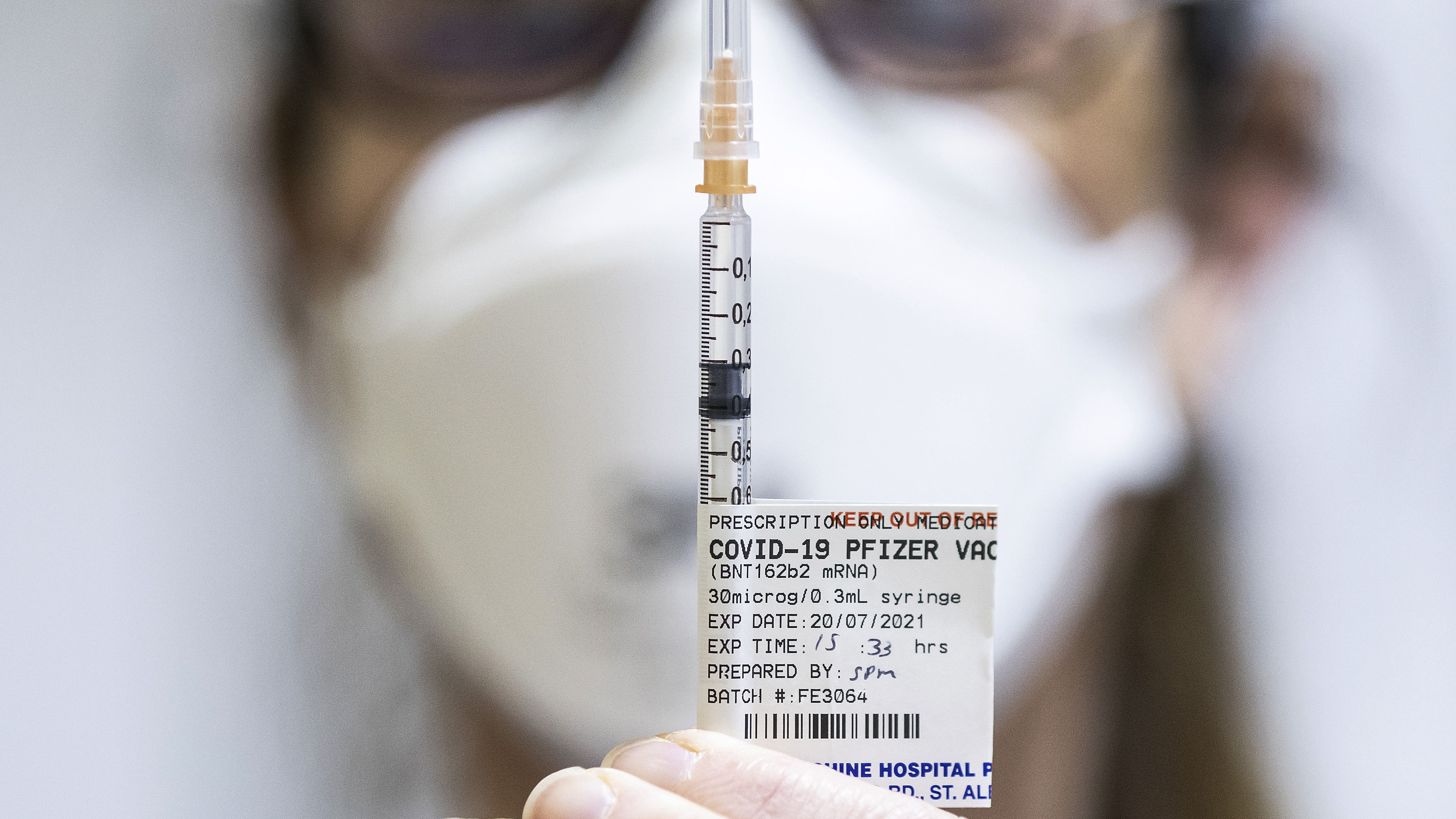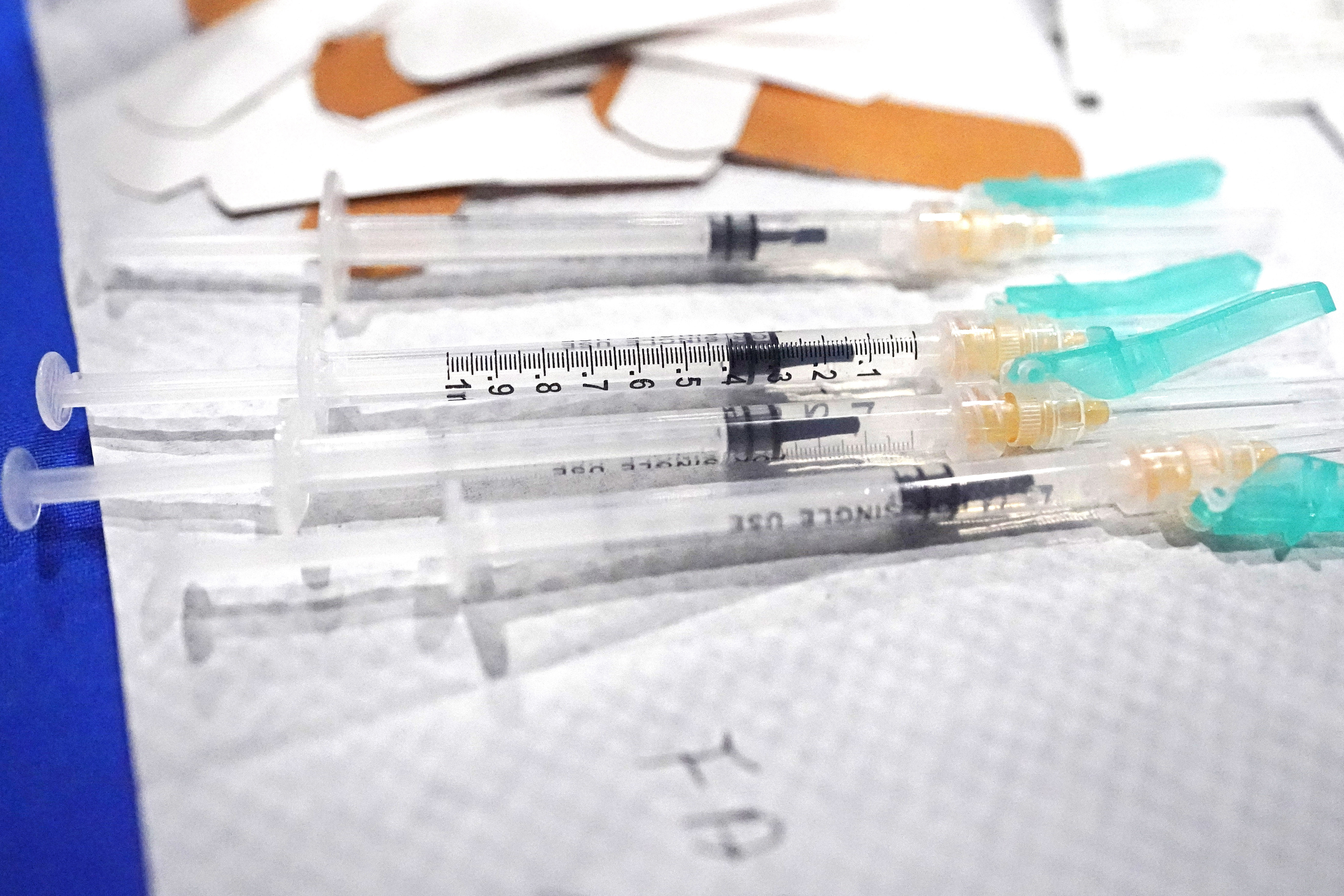More than 200,000 at-risk children as young as 12 will be eligible for the Pfizer coronavirus vaccine from Monday, as the country's expert vaccine panel separately recommends a push to prioritise first doses of the jab.
The Australian Technical Advisory Group on Immunisation on Monday recommended the American drugmaker's shot for children aged 12 to 15 at higher risk of severe COVID-19.
That includes those with several specific medical conditions including asthma, diabetes and obesity, Aboriginal and Torres Strait Islanders and those in remote communities.
READ MORE: Labor wants to pay vaccinated Australians $300 to bost rollout

In its reasoning, ATAGI said preliminary evidence suggested children and adolescents had a lower susceptibility to SARS-CoV-2, the coronavirus that causes COVID-19. But it noted scientific reports of an increased likelihood of severe disease among those with underlying conditions.
Minister for Health Greg Hunt said the government had accepted the recommendations, which would cover about 220,000 children, and expected advice for others aged 12 to 15 "in the coming months".
"I would encourage all parents who have a child with a medical condition or are immuno-compromised to bring them forward for vaccination," he said.
"We want to ensure all Australians are protected from COVID-19, including the most vulnerable in our community."
Separately on Monday, the expert vaccine group recommended a slight shift in vaccination policy in the face of the Delta variant and "an increasing risk of outbreaks in places other than greater Sydney".
ATAGI reiterated its previous advice that in a large outbreak the benefits of the AstraZeneca vaccine were greater for people of all ages than the extremely rare risk of serious side effects, such as the blood clotting disorder thrombosis with thrombocytopenia syndrome (TTS).
Bond University Assistant Professor in general practice Natasha Yates tells The Conversation the risk of getting one of the rare blood clots from the AstraZeneca vaccine is far lower than the risk of dying in a car crash this year. The risk of dying from the clot is even lower, particularly with the effective treatments now available.
READ MORE: South-east Queensland extends lockdown

But ATAGI also suggested a few changes in the rollout of the Pfizer jab to allow authorities to maximise the number of first doses administered in outbreak areas.
The one most likely to be felt on the ground is a recommendation to increase the gap between Pfizer doses from three to six weeks.
The group would also like to see the "prioritisation of any available and additional supplies" of both vaccines to those at greatest risk of getting sick, whether because of where they live or what they do.
"Providing a first dose of COVID-19 vaccine promptly to as many people as possible is likely to reduce hospitalisations and deaths from COVID-19," ATAGI said.
"Protection against severe outcomes is substantial after a single dose of either vaccine.
"A first dose-prioritisation strategy has been employed in many other countries."
The UK, in particular, employed the strategy to great effect, spacing out AstraZeneca doses over three months in a push to afford some protection as quickly as possible to as many Brits as possible.
Across the UK, more than 86 per cent adults and over have now received their first dose and more than 72 per cent their second dose, compared to almost 41 per cent of Australians over 16 with their first dose and almost 20 per cent with their second. The age groups are not exactly equivalent and the UK has a greater availability of doses from Pfizer, Moderna and Johnson & Johnson.
UK infectious diseases expert Professor Paul Hunter told 9News in April that he would follow a similar first-dose prioritisation approach in Australia.
"Most of the protection that you get with a vaccine - and it's not just COVID, it's any vaccine - comes with the first shot," he said.
"By and large the second shot is primarily to make it last longer to make the protection last years rather than months."
The Delta variant has slightly shifted that calculation through some evidence that a single vaccine dose offers significantly lower protection against the Delta variant than against the Alpha variant. Results were much closer after both doses.
Australian authorities have consistently warned residents they would not be fully protected until after they received their second dose.
And ATAGI continues to recommend a shorter four-to-eight-week gap between AstraZeneca doses in an outbreak "so that maximal protection against COVID-19 can be achieved earlier" as opposed to 12 weeks to prioritise longer-lasting protection.
It's unclear if this advice is linked to the much greater availability of AstraZeneca, with 3 million surplus doses.
